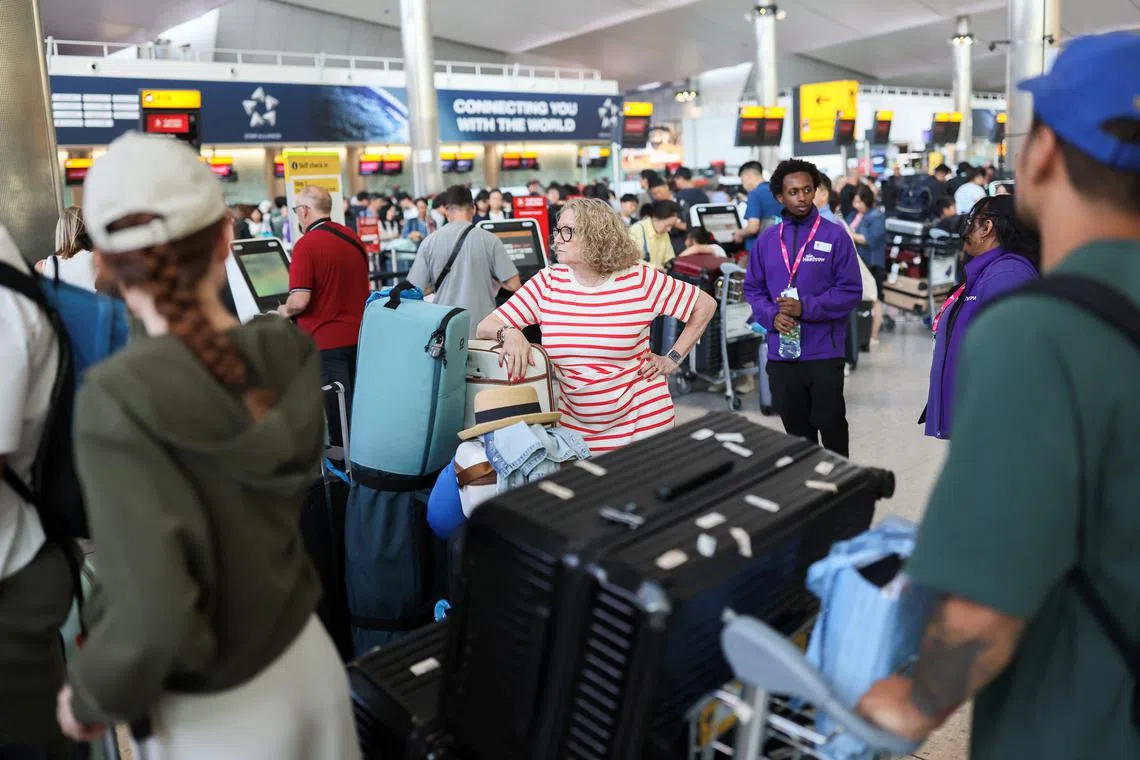Over 120 flights disrupted by UK air traffic control tech glitch
Sign up now: Get ST's newsletters delivered to your inbox

Airports including London’s Heathrow were affected. Heathrow is Europe’s busiest air hub.
PHOTO: REUTERS
Follow topic:
LONDON - Scores of flights to and from UK airports were cancelled on July 31 due to a technical glitch, according to the air traffic control service, prompting anger from airline chiefs.
The number of aircraft in London’s air space was limited by the service, known as Nats, as a result of a technical issue which was quickly resolved.
Airports including London’s Heathrow and Gatwick and Edinburgh were affected. Heathrow is Europe’s busiest air hub.
There were 67 departures and 55 arrivals cancelled as of 7.30pm while a number of flights were also diverted, according to aviation analytics firm Cirium.
In 2023 Nats suffered the country’s worst systems failure in almost 10 years, stranding thousands of passengers.
Airline chiefs reacted angrily to the cancellations which came at the peak of the UK summer holiday travel season.
Ryanair COO Neal McMahon called for Nats’ chief executive Martin Rolfe to resign over the failure.
“It is outrageous that passengers are once again being hit with delays and disruption,” said Mr McMahon.
“It is clear that no lessons have been learnt since the August 2023 Nats system outage.”

Passengers wait at Heathrow Airport, after radar failure led to the suspension of outbound flights across the UK, in Hounslow, London, on July 30.
PHOTO: REUTERS
EasyJet CEO David Morgan said it was “extremely disappointing” to again see a failure “causing disruption to our customers at this busy and important time of year for travel”.
“While our priority today is supporting our customers, we will want to understand from Nats what steps they are taking to ensure issues don’t continue,” he added.
A Department for Transport spokesperson said it was “working closely” with Nats to understand the cause of the glitch and the “implications for the resilience systems in place”.
The “technical issue” responsible for the disruption was at the service’s control centre in Swanwick in southwest England, it said.
It first announced problems at around 4pm and in an update an hour later said systems were fully operational and that departures had resumed at all airports. AFP

